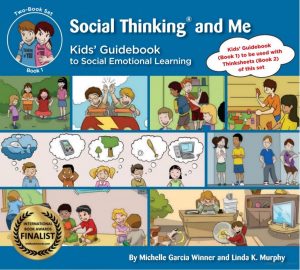Social Thinking: Chapter 1
Hello Everyone!
We have begun a set of mini-lessons related to problem-solving and learning social-emotional skills. They come from a great book we use in the Burnaby Schools District called Social Thinking and Me.
Each time I do a mini lesson in class, I will post some of the highlights here. To help us all with our social thinking skills, I would ask everyone to review this at home, to reinforce learning that will help us all get along and have a stronger community!
Chapter 1: What is Social Thinking?
- Social thinking is the type of thinking your brain is doing to figure out yourself and other people.
- Social thinking can include: noticing what we feel and need, communicating what we feel and need, noticing what others feel and need, and figuring out what to do with different people in different situations.
- Being a good social thinker takes practice. We can make mistakes, and we learn as we go along.
- Learning to talk to others is just one part of communicating. Another part of communicating is with your body, which is called nonverbal communication.
- Every year you learn more about social thinking and how to do things in better ways. This is called getting more mature.
- Social thinking helps us figure out the best way to behave so people will want to include you in their group.
- Social thinking also helps us figure out who we do or don’t want to be with.
- It does take extra work to do social thinking — it takes effort! It is work to share things, to pay attention to the feelings of others, and to be aware of the GROUP PLAN instead of just our SOLO PLAN. In a group, we have to be aware of the bigger plan that will help everyone and not just our own individual needs.
- I can get better and better at social thinking if I actively think and practice!
In class, we also identified all of the ways in which having stronger social thinking can help us in life. Can you discuss this at home?
Thank you,
Ms. D

